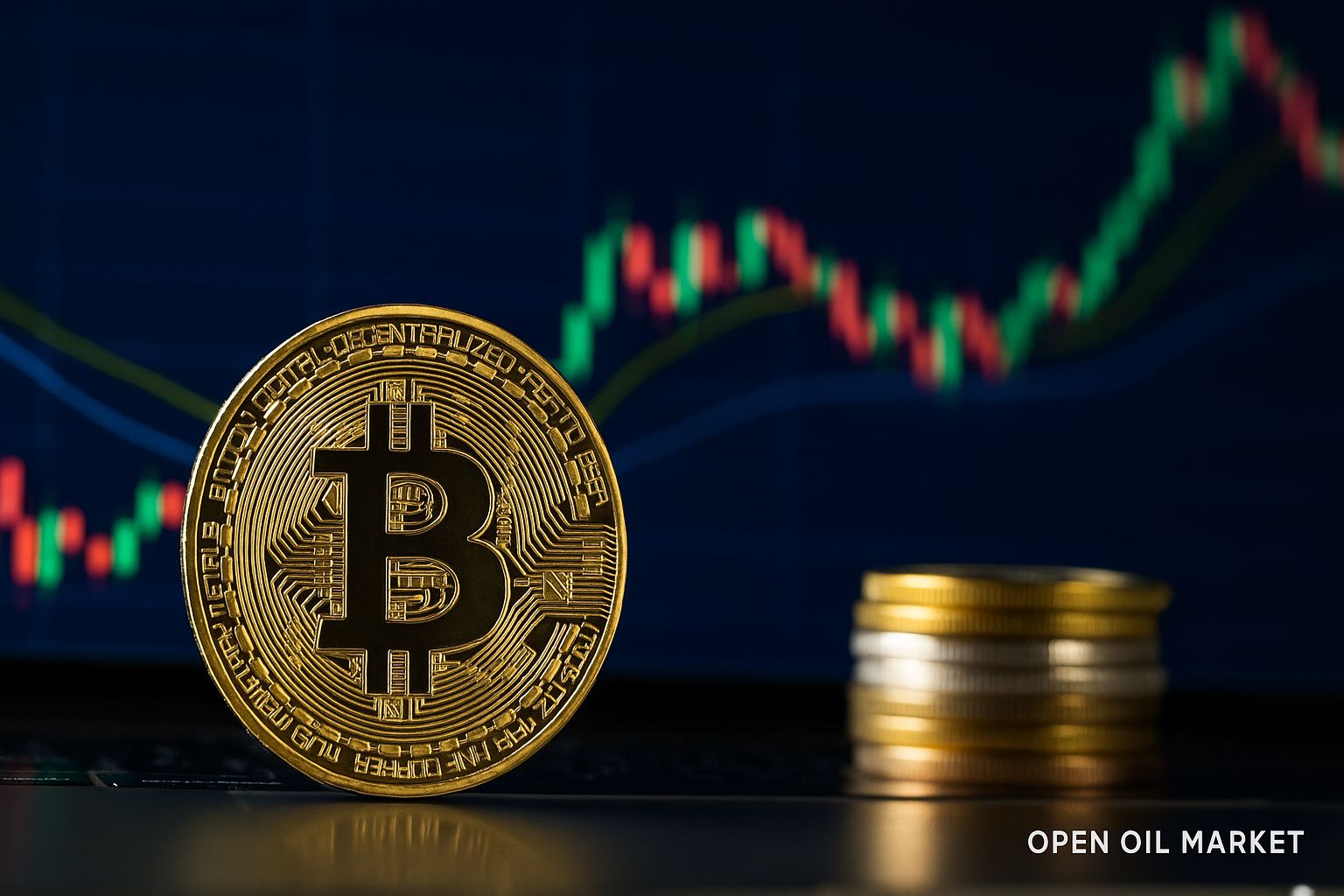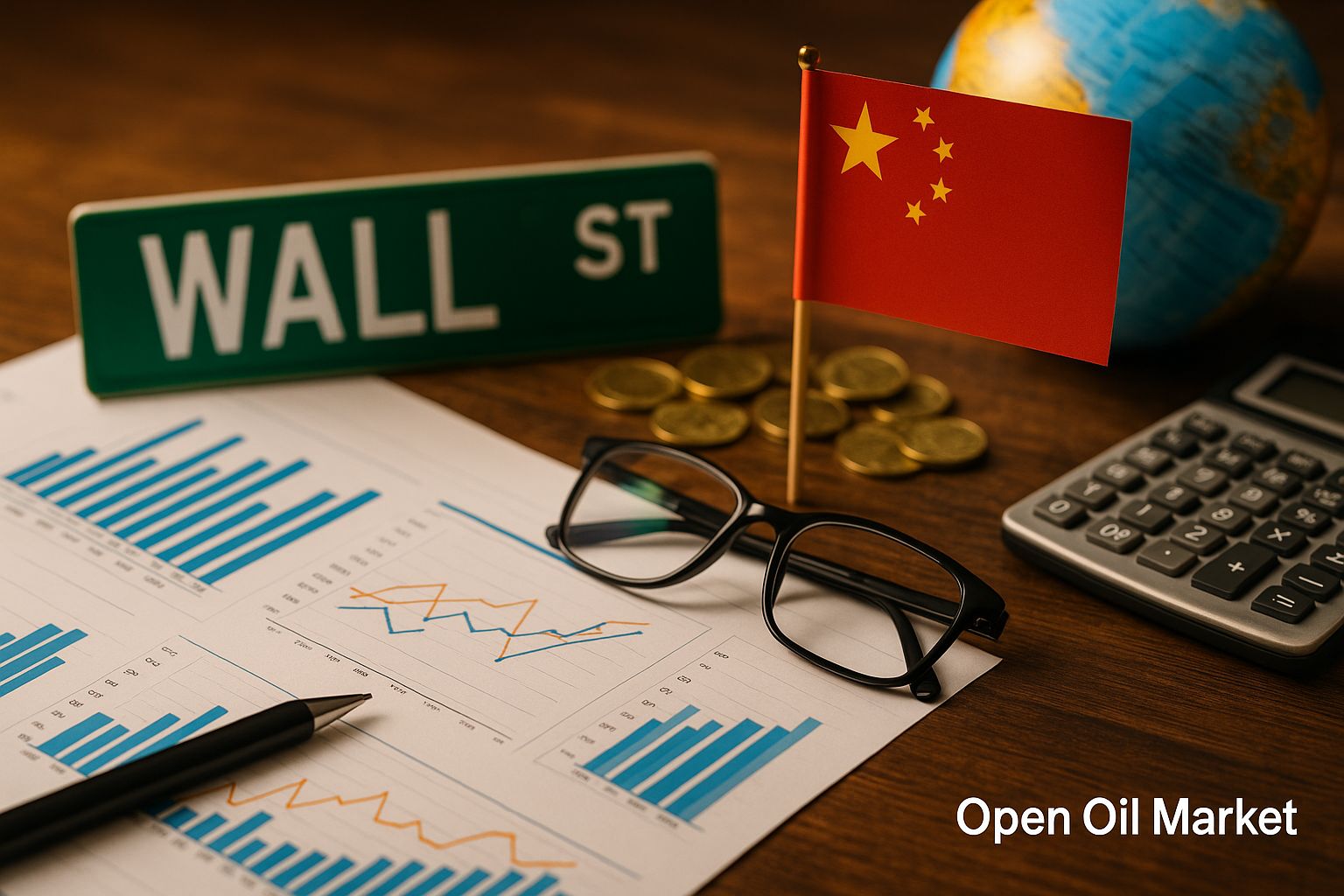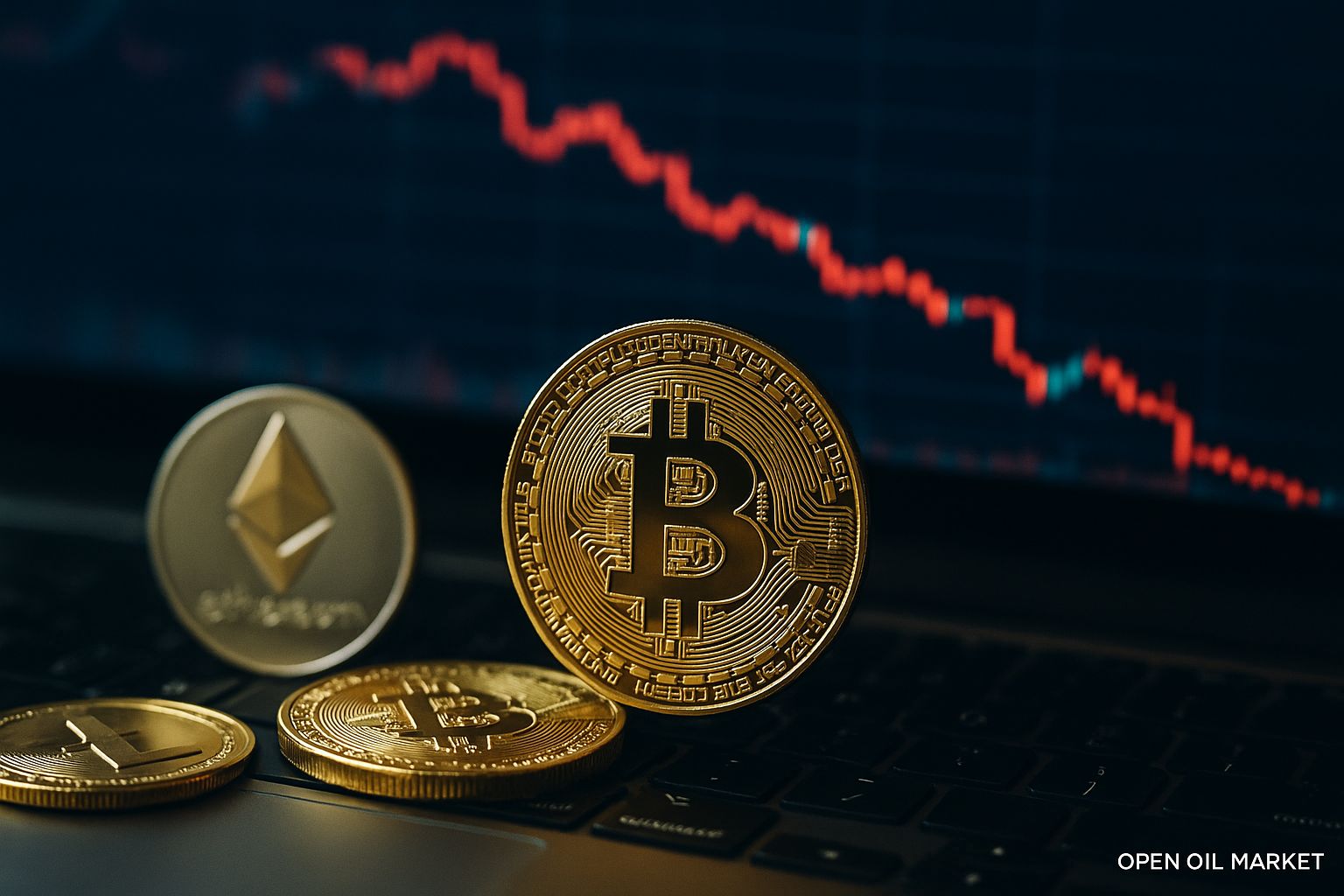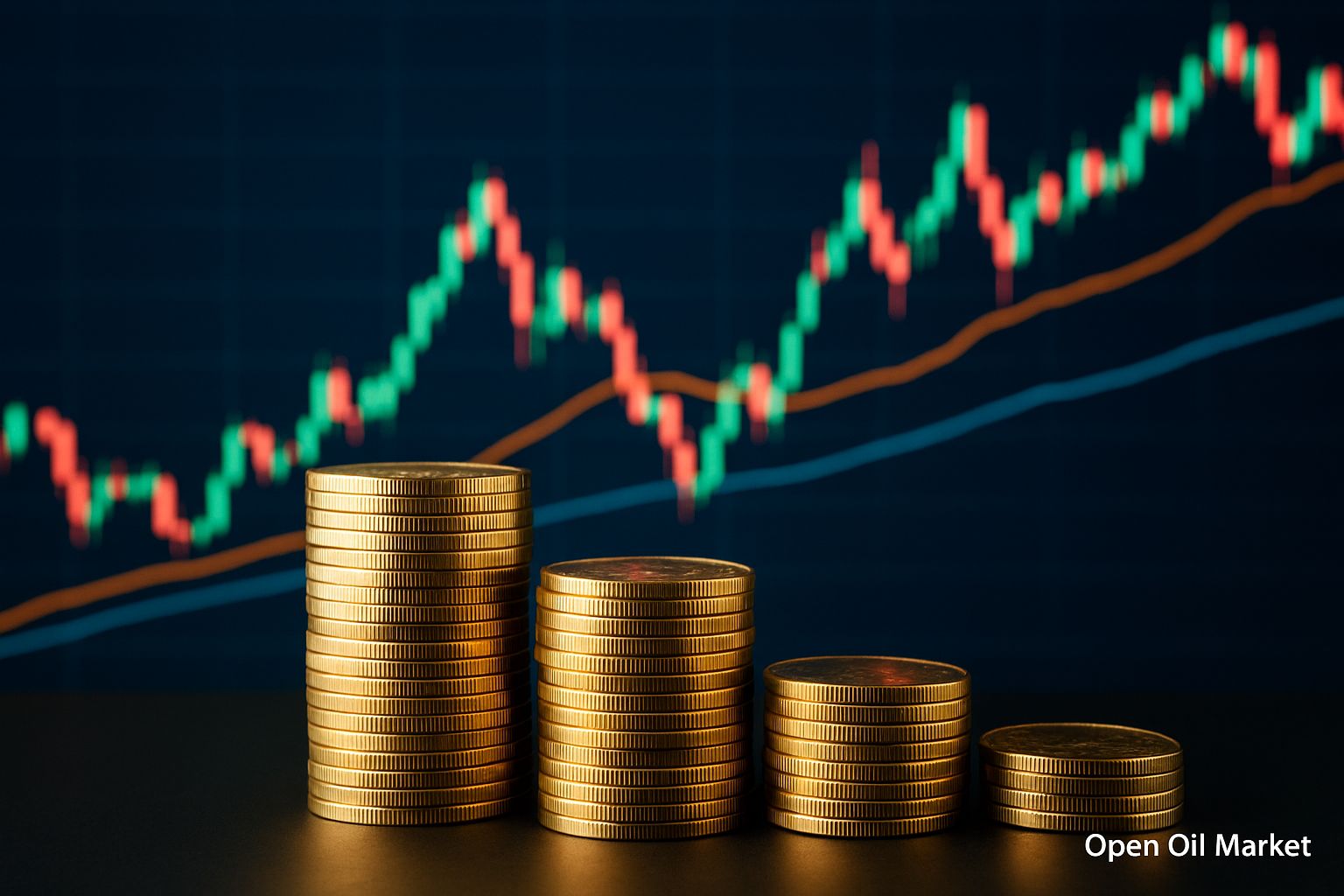
Cryptocurrency News - Thursday, July 31, 2025: Bitcoin Above $120k, Soft Fed Tone and Support for the Crypto Industry in the USA
The cryptocurrency market continues to attract investor attention: Bitcoin remains above the psychological threshold of $120,000, while the industry demonstrates resilience following a recent rally. Amid the stabilization of major cryptocurrencies, the influx of institutional investments remains record-high, and regulators showcase strategic support for the sector, setting the stage for further market development. Let’s delve into the current situation and key news relevant for investors on July 31, 2025.
Market Overview: Bitcoin and Key Trends
Bitcoin (BTC) is consolidating around $120–122k, maintaining its historic highs after impressive growth earlier this month. Daily volatility remains low, with BTC trading within a relatively narrow range, reflecting a balance between new buyers and those taking profits. Ethereum (ETH) holds around $3,900, closely approaching the $4,000 mark amid steady demand. The total market capitalization of cryptocurrencies exceeds $4 trillion, confirming the establishment of crypto-assets as a significant investment class. The macroeconomic backdrop is favorable for risk assets: the US Federal Reserve maintained its base rate at its meeting on July 30, confirming a pause in the tightening cycle. This expected move has reduced uncertainty and bolstered investors' risk appetite.
Overall market sentiment remains positive. Following the tumultuous rally in recent weeks, many assets have entered a phase of moderate correction or sideways trend. The absence of sharp price jumps is perceived as a sign of healthy consolidation: market participants are digesting the profits and considering new macro and regulatory signals. The focus now shifts to the impact of recent significant events. As of the morning of July 31, the market exhibits a fragile equilibrium, reflecting investor confidence against reduced uncertainty.
Top 10 Most Popular Cryptocurrencies
- Bitcoin (BTC) – approximately $120,000. The first cryptocurrency maintains over 45% of the total market capitalization and has reached new heights. Investors perceive Bitcoin as "digital gold" and a hedge against inflation risks, supporting high demand.
- Ethereum (ETH) – about $3,900. The largest altcoin accounts for ~18% of the market. Ethereum strengthens due to network upgrades and growing institutional interest – inflows into ETH-based funds are at record levels. The immediate goal is to surpass the $4,000 threshold amidst a deflationary emission model for ETH.
- Tether (USDT) – ~$1, the leading stablecoin. USDT provides liquidity in the crypto market, remaining the main instrument for "parking" capital between trades. The issuer, Tether, is preparing to launch a new regulated stablecoin in the US market, underscoring the demand for reliable "digital dollars."
- Binance Coin (BNB) – ~$800. The token of the largest cryptocurrency exchange, Binance, remains near historical highs due to increased platform activity. Despite tightened regulations in several countries, BNB has solidified its status as one of the leading coins, offering holders advantages on the exchange and within the BNB Chain ecosystem.
- USD Coin (USDC) – ~$1, the second-leading stablecoin. The coin issued by the Centre consortium (Circle and Coinbase) plays a key role in digital transactions. Full reserve backing and transparency have made USDC a benchmark for regulatory compliance, especially in light of new stablecoin legislation.
- XRP (Ripple) – ~$3.1. The token of the Ripple payment network has surged to new multi-year highs this month. XRP's recovery is linked to legal clarity in the US following the conclusion of a protracted lawsuit and expectations surrounding the launch of XRP-based ETFs. The coin attracts institutional investors as an efficient tool for cross-border transfers.
- Solana (SOL) – ~$180. This promising first-layer blockchain, known for its high transaction speeds, continues to hold its ground among leaders. SOL has shown significant growth over the year due to the development of Solana's DeFi and NFT ecosystem, as well as rumors regarding the potential launch of an ETF on SOL. Investors note improved network stability following previous technical disruptions.
- Cardano (ADA) – ~$0.77. The largest PoS blockchain focusing on an academic approach to development. ADA, although it has not set price records, consistently ranks in the top 10. In 2025, the Cardano network is undergoing a phase of active development of smart contracts and decentralized application ecosystems, supporting community and investor interest.
- Dogecoin (DOGE) – ~$0.22. This popular "meme" cryptocurrency, originally created as a joke, remains one of the most capitalized coins. DOGE has corrected after recent spikes in growth but continues to enjoy demand due to its loyal community and support from influencers. Dogecoin’s volatility may spike at times due to social media influences, yet overall the coin trends alongside the broader altcoin market.
- TRON (TRX) – ~$0.34. A platform for smart contracts and digital entertainment founded by Justin Sun, remaining in the top ten. TRX has demonstrated growth this week, standing out against a backdrop of stagnation among many altcoins. The Tron network attracts users with low fees and is actively used for stablecoin issuance and tokenization, supporting a positive price trend.
Altcoin Growth: XRP, BNB, Solana, and Others
The segment of alternative cryptocurrencies (altcoins) is developing in various directions. Among the most notable achievements is XRP and Binance Coin holding their ground at the attained heights. XRP, after surging above $3, is consolidating around multi-year highs, bolstered by positive regulatory news and expectations of institutional acceptance (the launch of ETF products based on XRP is anticipated). Investors view XRP's consolidation at these levels as a restoration of trust in the project after a period of uncertainty. BNB, the internal token of the Binance exchange, is trading near its record peak (~$800). After a rapid rise this week, a slight correction is possible; however, BNB as a whole maintains its position due to high user activity on the platform and the broad Binance ecosystem.
Other major altcoins show mixed dynamics. Solana (SOL) confidently holds around $180 after an impressive rally in the first half of the year – this signifies ongoing investor confidence in Solana's technical potential. TRON (TRX) has also increased by several percent this week, becoming one of the few altcoins "in the green" in recent days. Increased transaction volumes on the TRON network and its active use for stablecoin issuance in the Asian region are credited for this rise. Meanwhile, several notable altcoins are experiencing moderate corrections: for example, Cardano and Dogecoin remain slightly below their recent local peaks after pullbacks. Nonetheless, there remains general interest in alternative cryptocurrencies, especially those supported by active ecosystems or expected to launch ETFs. Investor selectivity is increasing: capital is primarily flowing into projects perceived as the most promising and prepared for institutional inflows.
Regulation: New Steps and Global Initiatives
The regulatory environment in 2025 is becoming increasingly favorable for the crypto industry. In the USA, the long-awaited report by the White House working group on digital assets has been released, setting a strategic vision for the sector's development. The document recommends forming a clear federal regulatory framework for cryptocurrencies and supporting innovation in this area. Key ideas include delineating the powers of regulatory bodies to eliminate uncertainty, encouraging the launch of new investment products (including spot ETFs on various crypto-assets), and even considering including Bitcoin in state reserves as a means of preserving value. While these proposals are yet to be realized, the fact that the highest levels of government are paying close attention to cryptocurrencies strengthens investor confidence in the sector's long-term prospects. The report was released shortly after President Donald Trump signed the United States' first-ever stablecoin legislation on July 18 – these steps reaffirm the administration's course toward transforming America into the "crypto capital of the world" and creating clear rules for the market.
Beyond the US, new rules for crypto-assets are being formulated in other regions as well. In the European Union, the pan-European MiCA (Markets in Crypto-Assets) regulation has come into force, introducing uniform requirements for crypto business and stablecoin issuance across all EU countries. The implementation of MiCA is expected to reduce regulatory risks for companies and make the European cryptocurrency market more transparent and secure – the process of licensing the first crypto exchanges under the new rules has already begun. In Asia, several countries (Hong Kong, Singapore, etc.) are competing for the status of regional crypto hubs, offering special regulatory regimes to attract companies and capital. The general global trend is that governments are seeking to integrate cryptocurrencies into the existing financial system through clear norms, which, in the long term, reduces legal risks for investors and major market players.
Institutional Investments Hit Records
Major institutional investors continue to rapidly increase their presence in the cryptocurrency market. According to CoinShares, total inflows into cryptocurrency funds in July reached record levels: from the beginning of the month until July 30, the industry attracted over $13 billion in new capital, significantly surpassing previous highs. Consequently, the total assets under management (AUM) of crypto funds have reached an all-time peak, exceeding $220 billion. For comparison, at the beginning of the year, this figure was half that amount – the rapid growth in AUM reflects the high interest from financial institutions. Moreover, the capital influx has persisted for nearly four consecutive months, indicating sustained trust in digital assets.
The investment structure indicates growing interest in leading altcoins. Over the last few weeks, there has been a reallocation of capital: while Bitcoin-based funds have recorded a slight outflow (the first in a long time), products oriented toward Ethereum and other major altcoins have attracted significant capital. Last week, ETH funds saw inflows of about $1.6 billion – one of the largest weekly inflows in history – while products on Solana and XRP collectively attracted nearly $500 million. Analysts interpret these trends as signs of an emerging "altseason," where institutional investors diversify investments beyond Bitcoin in search of higher yields. This approach remains selective: funds are primarily directed into projects perceived as the most promising and prepared for institutional participation (those with sustainable technologies, liquidity, and regulatory clarity).
Major Investors and Companies in the Crypto Market
The growing trust in cryptocurrencies is underscored by the actions of well-known investors and corporations. Large economic players are betting on digital assets, thereby reinforcing the market trend. For instance:
- MicroStrategy: A pioneer among public companies using Bitcoin as a reserve asset, continues to increase its BTC holdings. The company, led by Michael Saylor, recently purchased more coins, bringing its total ownership to nearly 600,000 BTC. This move emphasizes the business’s confidence in Bitcoin’s long-term growth and its desire to capitalize on its strengthening.
- Traditional Financial Institutions: Leading banks and payment networks are integrating cryptocurrencies into their services. Goldman Sachs and Deutsche Bank have launched platforms for trading and storing digital assets, providing affluent clients with secure access to crypto investments. Payment giants Visa and Mastercard are expanding pilot projects for using stablecoins for international settlements and testing the integration of central bank digital currencies (CBDCs) into their networks. These steps by recognized financial players indicate that digital assets are becoming an integral part of the mainstream global finance.
Such examples of capital inflows and shifts in strategies by major players enhance the legitimacy of cryptocurrencies in the eyes of the market. Where participation in crypto-assets was previously limited mainly to specialized funds and tech enthusiasts, it is now joined by media corporations, traditional investment funds, and Wall Street veterans. This forms a new level of trust and is likely to lead to further capital inflows from traditional financial spheres.
Infrastructure and Technologies: Mining, DeFi, and Ecosystem Development
Alongside the rise in investments, the infrastructure of the cryptocurrency market is expanding. The mining industry continues to set new records. In the last week of July, the total computational power of the Bitcoin network (hashrate) reached an all-time high, and mining difficulty hit a peak at the latest adjustment. This indicates that increasing resources are being invested in BTC mining, enhancing the network's security and decentralization. Major mining companies are announcing capacity expansions: new farms are being launched in North America and the Middle East, strengthening these regions' positions as global crypto-mining capitals. The push to localize the production of mining equipment (as seen with the planned Bitmain factory in the US) and access to cheap energy resources reduce the industry’s dependence on Asian supplies and geopolitical risks.
The development of technologies and services for users is also gaining momentum. The Ethereum ecosystem continues to evolve: developers have announced the upcoming network update aimed at enhancing scalability and reducing fees. Already, layer-two (L2) solutions built on Ethereum, such as Arbitrum and Optimism, are experiencing record congestion due to fast and low-cost transactions – this is attracting new users to decentralized finance (DeFi) and blockchain applications. The boundaries between traditional finance and DeFi are increasingly blurring: a consortium of European banks recently successfully tested the issuance of digital bonds via a blockchain platform, demonstrating the effectiveness of distributed ledger technology in classic financial instruments. Major crypto exchanges and wallets are integrating DeFi functions (such as earning yields on stablecoins or token swaps via smart contracts) directly into their applications, simplifying access to decentralized platform opportunities for a wider range of investors. Such initiatives – from industrial projects to user services – are forming a more mature ecosystem. The enhancement of infrastructure increases the reliability and usability of cryptocurrencies, which, in the long run, attracts even more investors and users. The implementation of new technologies, whether through local production of equipment or the integration of DeFi services into familiar financial platforms, contributes to the mass adoption of cryptocurrencies and increases their role in the global economy.
Outlook and Expectations
As we approach August 2025, the cryptocurrency market enters a new phase, combining maturity and dynamism. The resilience of Bitcoin around $120,000 indicates that the market has digested previous peaks and is preparing for new tests. Institutional interest, bolstered by record inflows of capital and the participation of major players, creates a strong upward momentum that could persist into the second half of the year. Simultaneously, active engagement from regulators – from US government initiatives to unified rules in Europe – reduces uncertainty and lays the groundwork for broader cryptocurrency adoption in the real economy.
Of course, volatility remains inherent to the market: cryptocurrencies remain sensitive to news and macroeconomic factors. The initial market reaction to signals from the Fed and the new governmental report in the US was cautiously positive, but it will take some time to fully assess their impact. A soft tone from regulators and further positive news (such as progress on crypto-ETF approvals or technological breakthroughs) could provide a new impetus for the bullish trend. Conversely, unexpected restrictions or macroeconomic shocks may temporarily cool investors' enthusiasm. Nonetheless, the overall outlook appears encouraging: the crypto market is increasingly integrating into global finance, and investments in digital assets are transforming from a niche hobby into mainstream acceptance.
For investors from the CIS and around the world, the current state of affairs means an expansion of opportunities and tools. Cryptocurrencies are now viewed not only as speculative assets, but also as part of a balanced investment strategy and a means to protect capital from risks. If current trends persist, further growth in confidence in the sector, the appearance of new products (such as the launch of spot ETFs on various altcoins), and capital influx from traditional markets can be expected. Under these conditions, cautious optimism prevails: the market is closely monitoring the situation, ready to seize emerging opportunities while considering the risks inherent to this young high-tech sphere.





